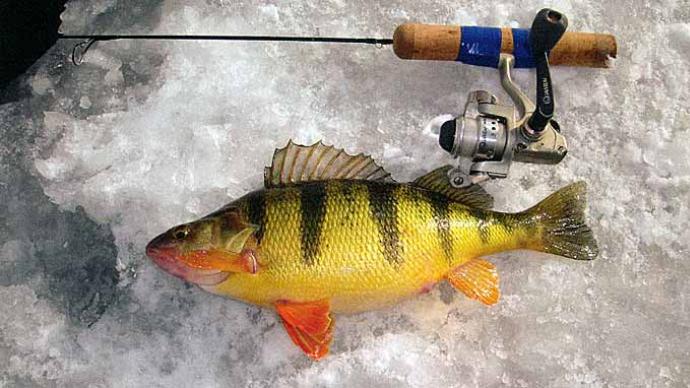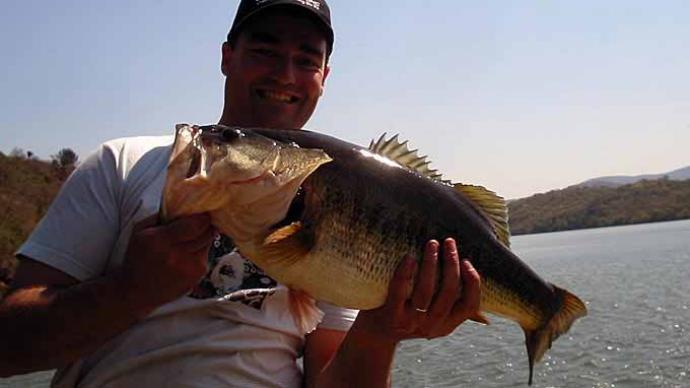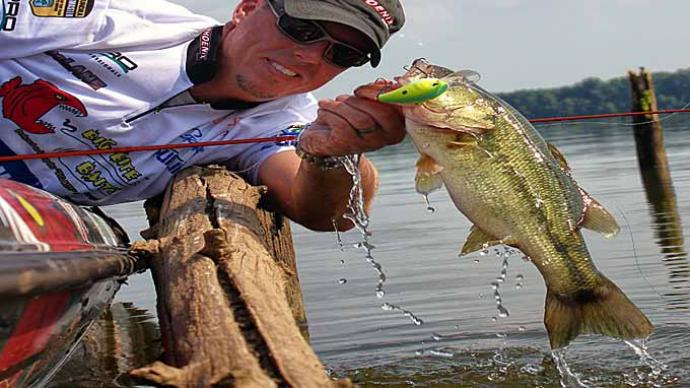
Here is a partial answer from the literature, "The growth rate of fish is highly variable because it is highly dependent on environmental factors such as temperature, dissolved oxygen, ammonia, salinity, and photoperiod (Cech and Moyle, 2000)." The authors say, "These factors interact to influence growth rates and with other factors such as competition, amount and quantity of food, and state of maturity." Further, the authors state, "Temperature is among the most important environmental variables."
Well, there's the problem, temperature.
Those sentences are a little complex to digest but define the topic well. Temperature is probably the most crucial factor determining whether fish grow...or not. Why? Because fish are cold-blooded, and their base metabolism, activity level, digestive efficiency, and other vital life functions are primarily determined by temperature. In short, a fish prefers temperatures where they grow the best, and wintertime in North America is generally not that time. A more nuanced answer includes the type of fish and location (primarily latitude).
Upstate New York is cold most of the year. Largemouth bass prefer water temperatures that are warm or even a bit hot, which means that they do not like upstate New York winters. Generally, good bass growth happens in the mid-70s to mid-80s. Once water temperatures cool down into the low 60s, largemouth metabolism slows down, feeding slows down, and growth slows down. Will a largemouth eat in winter? Yes, they can be caught frequently while ice fishing. However, the feeding they do under the ice can be thought of as a small-maintenance diet.

Under the ice, the warmest water is around 40°F near the bottom, and the water gets even colder the closer it gets to the ice. In this situation, Largemouth may even lose weight over the cold winter. Use the Internet to quickly search for climate data for any ponds' area to determine temperatures, and probably growth. For example, in upstate New York, there are 148 days a year where the annual nighttime low is below freezing and <1 day when the average high temperature is over 90 °F. The average annual temperature is around 45°F. Again, this is way too cold for most of the year for largemouth bass growth.
The same rules apply to Largemouth bass in the South. When the temperature dips down, water cools, and bass grow more slowly. An additional problem occurs in the deep South as there may be periods when the water gets above 90°F, which is too warm for Largemouth bass growth. In southern regions, a better question is, "How long do temperatures stay in a good bass growth zone?" In parts of the deep South, summer water temperatures need to cool down enough to reach a sweet spot for Largemouth. The fall and spring may be a significant period when bass growth takes off. If a winter cold snap plunges water temperatures into the 50s, it causes Largemouth growth to slow or cease. Forage fish like tilapia will die off during these cold snaps, further inhibiting bass growth.
Slow growth from warm and cold-water temperature forays is seen as a constriction of growth on a fish scale or otolith, two structures biologists use to age scales. Like trees, fish scales and otoliths lay down rings that are affected in appearance by growth rates. A period of slow growth on a fish scale can be seen as a compression of the growth rings, and rapid fish growth is shown by more space between rings. When this delineation is cyclical and predictable, from a cause like winter in the northern U.S., it is called an annulus and is used to age a fish.
Most fish in North America demonstrate this winter slowdown in growth on their scales and other hard structures.
What about trout? Do they grow in winter?
Again, sometimes.
Trout really like water temperatures in the 50s, and maybe low 60s, to grow well. Summer might be too warm at times in New York when the water temperatures make a foray into the low 70s. At this latitude, trout will be active in winter—feeding, foraging, digesting, and, yes, even growing a bit (slowly) over the course of the winter. Trout will do exceptionally well in Fall and Spring when water temperatures spend most of the time in the 50s.
Sometimes, trout in large, stable lakes demonstrate surprising seasonal changes in growth because of prey patterns. For example, in lakes with alewife (a pelagic herring) and lake trout, the alewife and lake trout like to over-winter at the bottom of the lake in 40°F water. In the summer, alewife will be in the warm water at the top of the lake, and the lake trout will be back at the bottom in the cold water. Predator and prey overlap in winter, but the alewife and lake trout will be spatially separated in the summer. In this case, if no other deep-water forage is present, the lake trout may do worse in summer than in winter. After all, growth is not just about temperature. In this example, prey availability is a driving factor.
For growth to happen, a fish needs to consume more calories than it uses in an environment conducive to that growth.
What about cool water fish in winter, like perch, smallmouth bass, and pike? They will grow in a pond or lake where the temperature spends a lot of time in the mid-60s. In my personal 1.3-acre pond, cool water is where the action is. Smallmouth love this pond because it spends most of the ice-free time in the 60s, resulting in great smallmouth growth all spring, summer and fall. The growth problem is found in an inability to maintain enough natural forage.
Increased metabolism of fish in this "sweet spot" has blown through excess forage, and these fish are now on a natural forage maintenance diet and have topped out around 16-17 inches. Bass still grow, but the pond's fertility is the limiting factor.
Fish have an indeterminate growth rate, meaning they grow their entire lives. Do fish grow in winter? In the north part of the country, the answer is that most of the growth (or addition of new body mass) is slow enough to say no for warm water fish, not really for cool water fish, and slowly for cold water fish. For many species, growth in the northern winter may be imperceptibly slow, or fish may even lose body mass. The real story here is around the margins when water temperatures fall into the fish's temperature sweet spot. If you feed your fish, do some research, find their temperature sweet spot, and feed them most then. Good growth happens like magic when temperature overlaps with good water quality, good prey fish abundance or food, and low competition for those resources. A good environment, good food, and good temperature equals good growth. Sorry, winter is not growth time for most fish in our ponds.
Cech, J.J. Jr. and P.B. Moyle (2000). Fishes an Introduction to Ichthyology 4th ed. Prentice Hall, Upper Saddle River, NJ. 612p.
Mark Cornwell is a professor of fisheries at the State University of jPBBBBm New York in Cobleskill, NY. Based near the Catskill foothills, he feeds the brains of hungry fish students, offering plenty of applied science and hands-on opportunities beyond the classroom. Cornwell also works with select local landowners, collecting data and analyzing ponds, with students also receiving the benefit. He also assists the college's aquaculture department.
Reprinted with permission from Pond Boss Magazine



